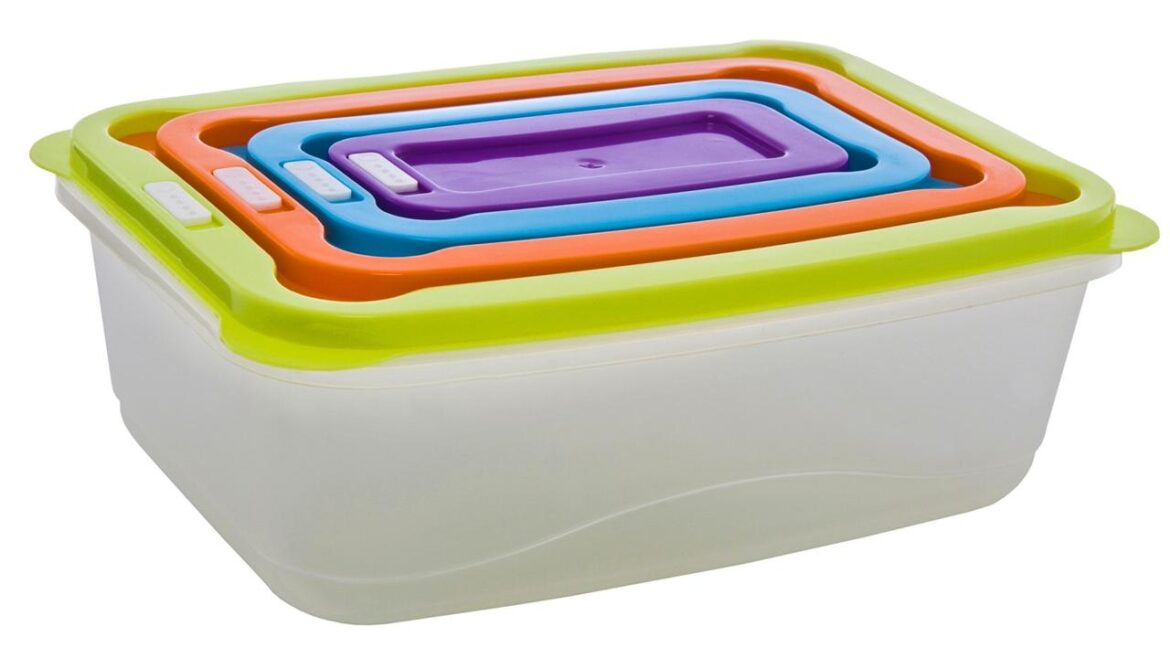All over the world, lunchtime is a time well appreciated. No matter what corner of the world you’re from, nobody can deny the satisfaction you get from a well-packed homemade meal. Various types of lunch boxes are used worldwide, depending on the area you are speaking from.
From the classic stacked tiffin to paper bags to the metal bento box, a wide variety of lunch boxes are celebrated worldwide. However, specifically speaking about plastic, there are 7 types of plastic qualities with which lunch boxes are made. The type of lunch that can be stored changes with the type of plastic used in manufacturing.
Different types of Plastic Lunch Boxes
Below are the types of plastic used in making lunch boxes!
Polyethylene Terephthalate (PETE/PET)
Polyethylene Terephthalate, with the recycling number 1, is a hard or semi-hard plastic that usually forms soft containers. These containers are used to hold various sorts of foods. PET, specifically, serves condiments like mayo and ketchup and single-serve drinks like water. It is a lightweight plastic. However, it is manufactured in a way to make it resistant to spill and wear and tear.
High-Density Polyethylene (HDPE)
The high-density Polyethylene, with the recycling number 2, is a non-transparent plastic, which is hard in structure, so it can easily hold foodstuff without the fear of spills and leaks. It is used in manufacturing plastic milk jugs and squeeze bottles for condiments etc. This type of plastic is highly reliable, which is why it is so significantly used as lunch containers.
Polyvinyl Chloride (PVC)
Polyvinyl chloride, with the recycling number 3, is mainly made with chlorine as the core ingredient. It makes it chemically and physically resistant, such that it is used worldwide as shrink wraps and clings films. Apart from that, in the food industry, PVC is used to make gum and toffee wrappers.
Low-Density Polyethylene (LDPE)
Low-density Polyethylene, with a recycling number of 4, is a widely used type of plastic for lunch containers. LDPE holds the quality of being heat resistant and flexible, which makes it very suitable for six-pack can rings, plastic cup lids, and even plastic shopping bags used to carry fruits and vegetables in grocery stores!
Polypropylene (PP)
Polypropylene, with the recycling number 5, is a tough plastic that is highly unlikely to break. It can be transparent, opaque, or manufactured into any color of choice, which is why it is mainly used to form yogurt and sour cream containers. It can also withstand high temperatures, so it is microwave-safe. This plastic type can be used as a lunch box container as it is the safest option out there.
Polystyrene (PS):
Polystyrene, with the recycling number 6, is a rigid plastic without malleability. Hence, it is used to make plastic cups, and in the food industry, it is usually used to form egg trays and fast food containers. It is not brittle, so there are fewer chances of wear and tear.
Other:
Any sort of plastic labeled as ‘Other’ or with the recycling number 7 indicates that it is something different compared to the first six types mentioned. It can be made using a wide range of core ingredients, which it can be used for innumerable purposes. However, food packaging is most commonly used as citrus juice bottles or fruit containers. Bottom Line
Conclusion
The 7 different types of plastic can be used worldwide for many different purposes. However, almost all of them can be used as various forms of lunch boxes. Some of them are trustworthy to carry liquids, whereas some can be used to carry hot or cold foodstuff. With an array of uses that the types of plastic conveniently provides, no doubt it is popular as a lunch box container material.
